Abstract
The results of a double-blind therapeutic trial on 217 men with nongonococcal urethritis (NGU) show that minocycline was more effective than rifampicin. Before treatment Chlamydia trachomatis was isolated from 43% of men, Ureaplasma urealyticum from 59%, and Mycoplasma hominis from 22%. Chlamydiae and ureaplasmas were isolated less frequently from men with a recent history of NGU. Minocycline was given to 94 patients, and after treatment chlamydiae were isolated from only one of 40 initially chlamydia-positive patients and ureaplasmas from only five of 57 initially ureaplasma-positive patients. Although most patients responded clinically, failure and partial recovery rather than complete recovery were observed more often among those who were infected with ureaplasmas. Rifampicin was given to 123 patients, after which chlamydiae were isolated from only one of 53 initially chlamydia-positive men whereas ureaplasmas, insensitive to the antibiotic in vitro, were isolated from 55 of 68 men who had initially positive results. Patients infected with ureaplasmas failed to respond to rifampicin treatment significantly more often than those who were not infected. This was also observed when only patients who had never had NGU or who had not had a recent episode were considered. Furthermore, 24 (44%) of the 55 men whose ureaplasmas persisted failed to recover whereas only one (7·7%) of 13 men whose ureaplasmas disappeared did not respond to treatment. These results suggested that ureaplasmas were a cause of urethritis in some of the men (an estimated 10% at least). In addition, Reiter's disease developed in two men treated with rifampicin from whom only ureaplasmas had been isolated initially. M. hominis did not seem to have an important pathogenic role in NGU and there was evidence that ureaplasmas were an unlikely cause of urethritis in some men since the organisms persisted despite complete clinical recovery.
Full text
PDF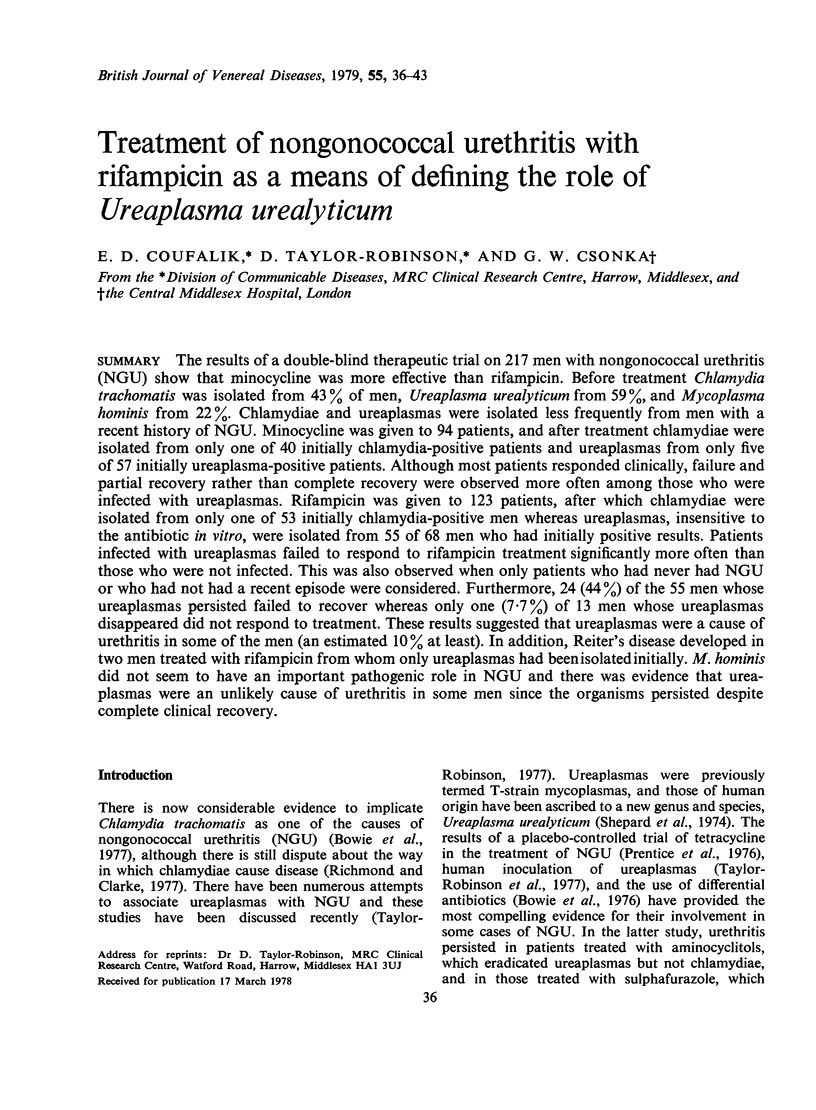
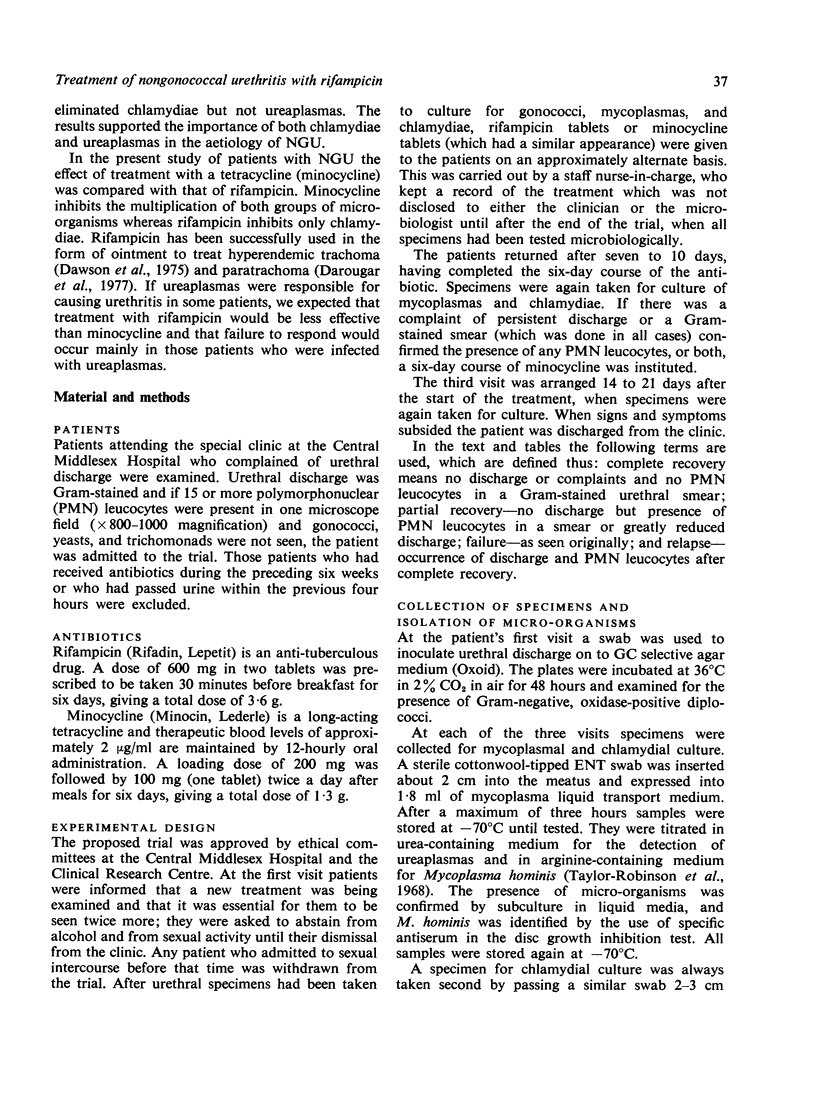
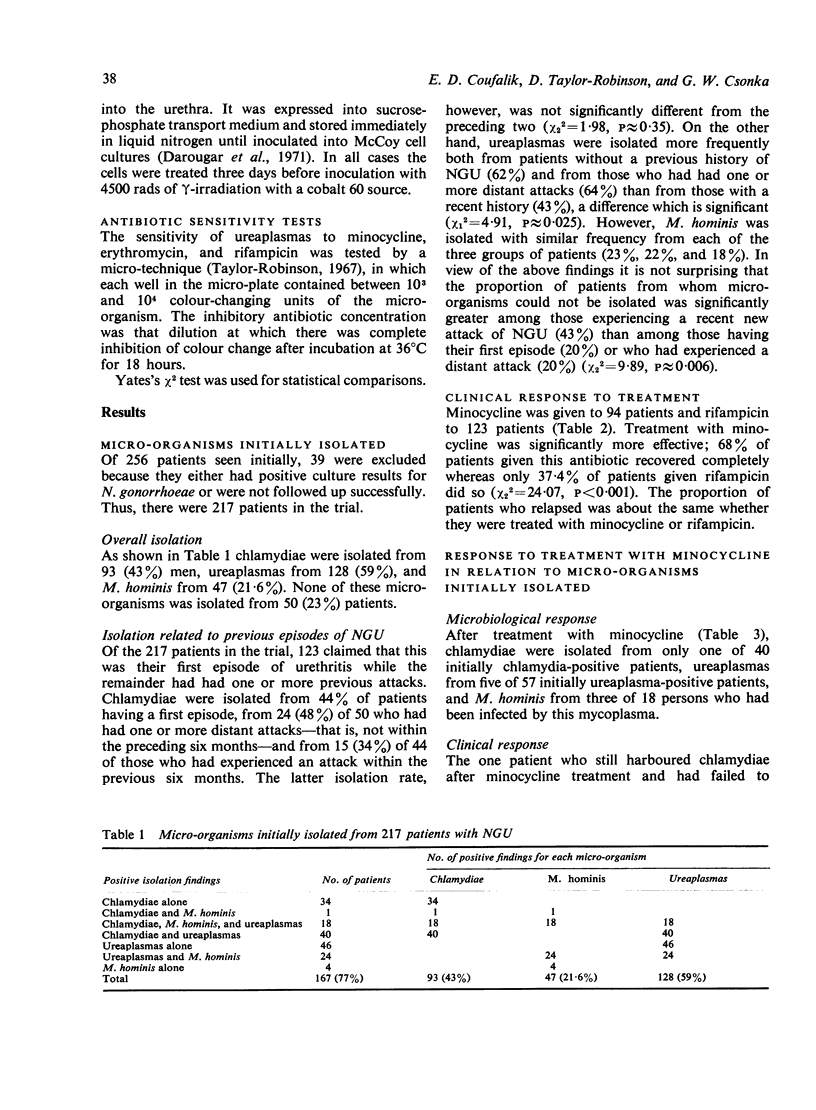
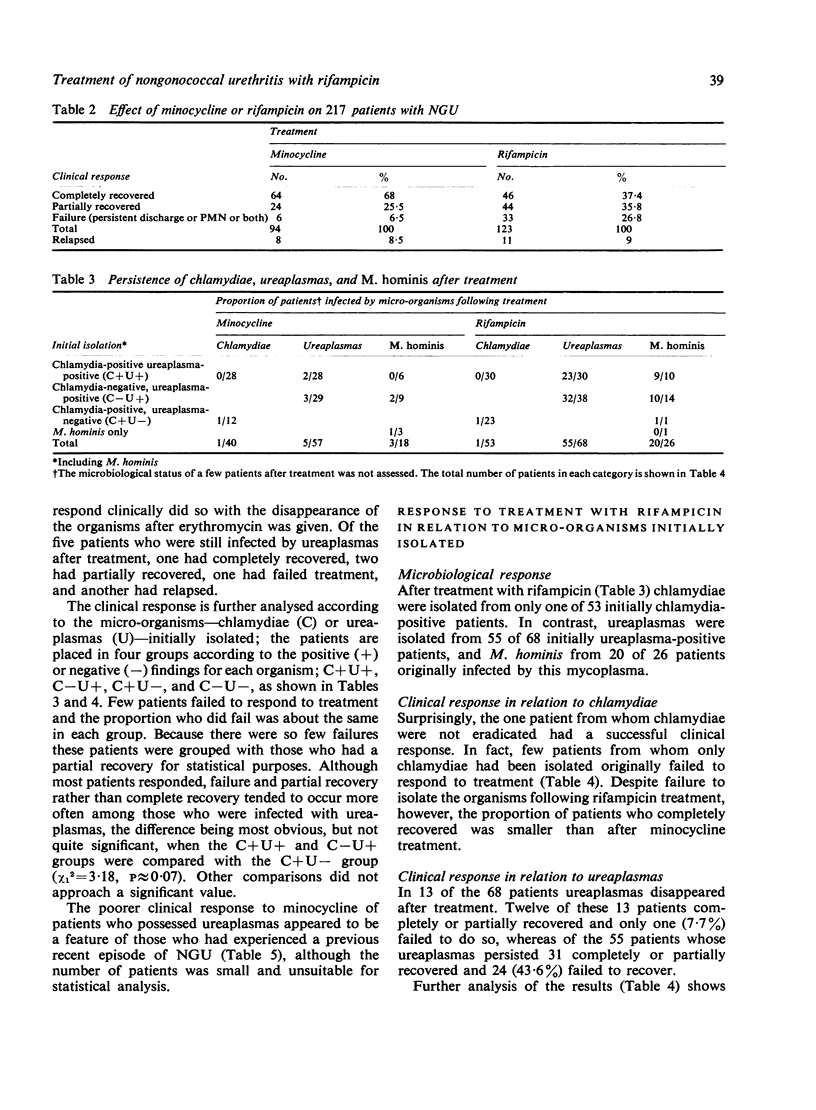
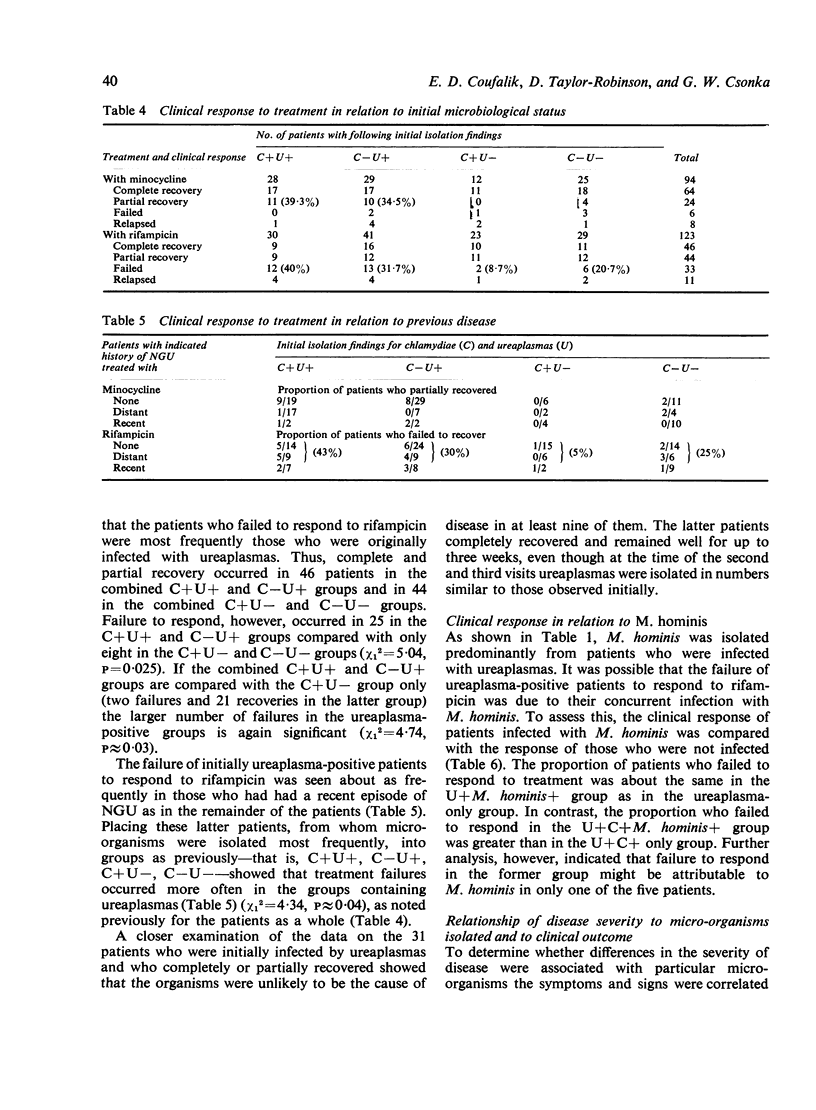
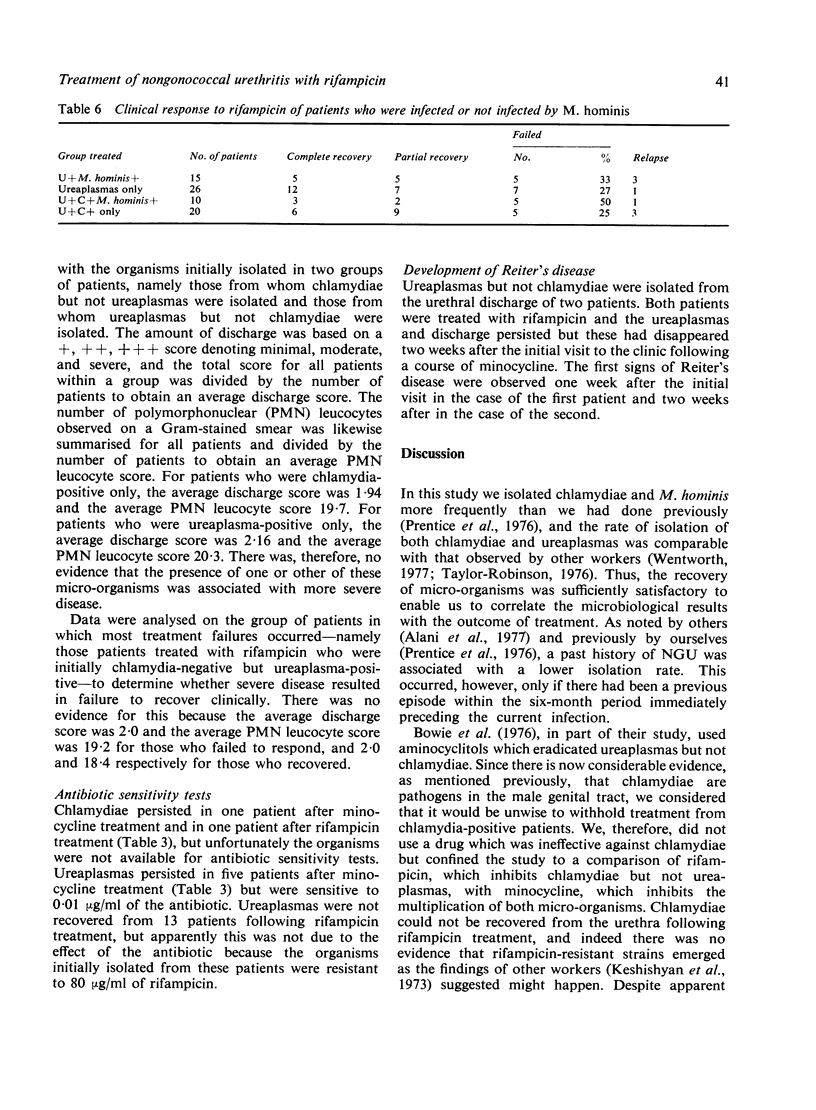
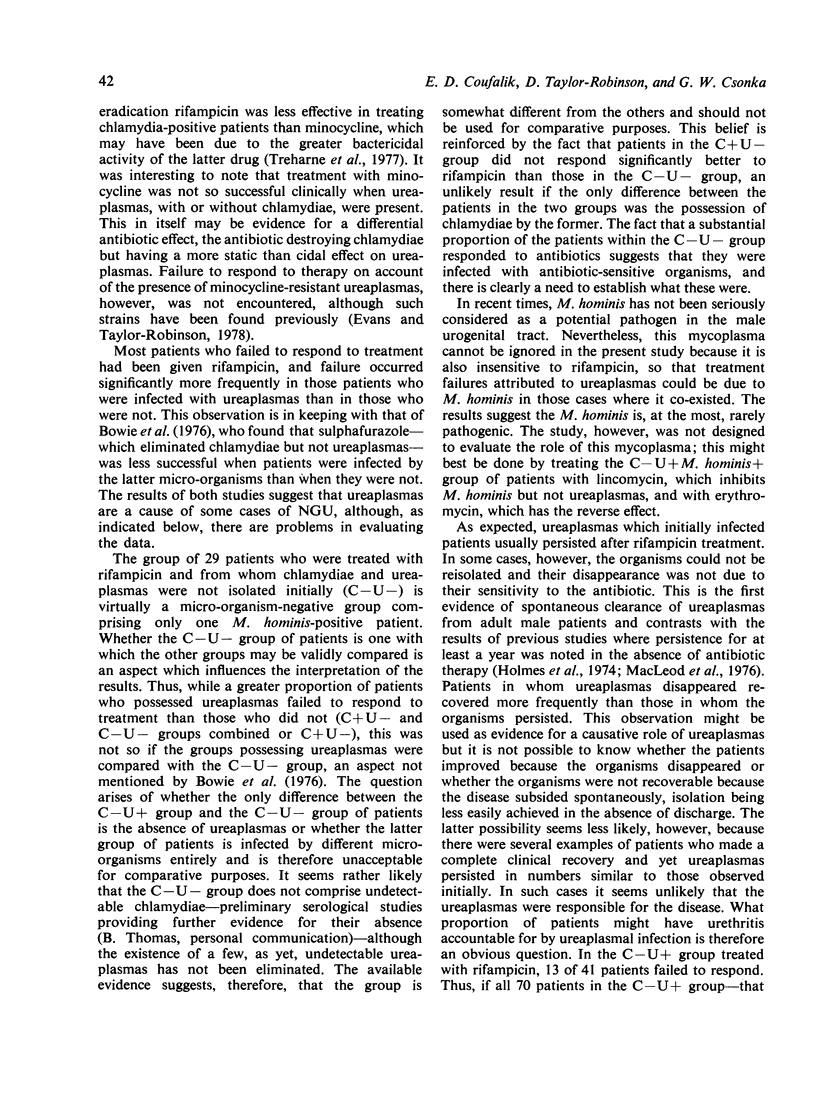
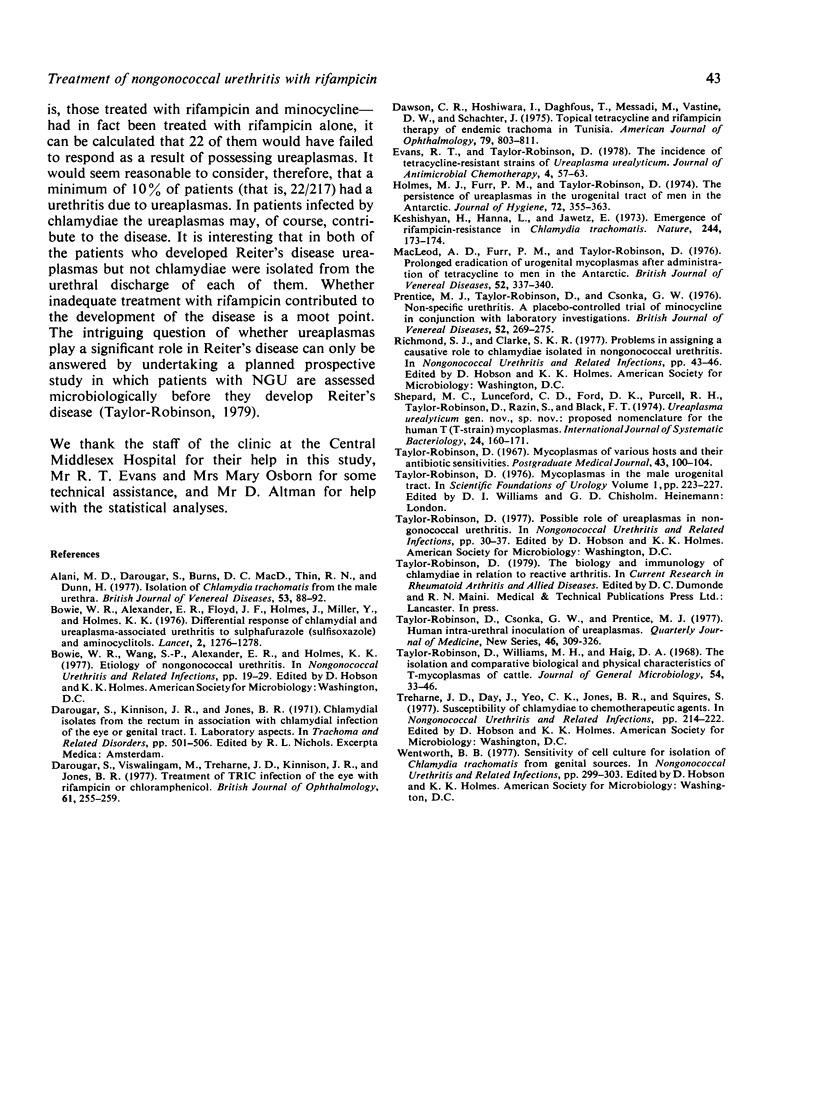
Selected References
These references are in PubMed. This may not be the complete list of references from this article.
- Alani M. D., Darougar S., Burns D. C., Thin R. N., Dunn H. Isolation of Chlamydia trachomatis from the male urethra. Br J Vener Dis. 1977 Apr;53(2):88–92. doi: 10.1136/sti.53.2.88. [DOI] [PMC free article] [PubMed] [Google Scholar]
- Bowie W. R., Floyd J. F., Miller Y., Alexander E. R., Holmes J., Holmes K. K. Differential response of chlamydial and ureaplasma-associated urethritis to sulphafurazole (sulfisoxazole) and aminocyclitols. Lancet. 1976 Dec 11;2(7998):1276–1278. doi: 10.1016/s0140-6736(76)92034-1. [DOI] [PubMed] [Google Scholar]
- Darougar S., Viswalingam M., Treharne J. D., Kinnison J. R., Jones B. R. Treatment of TRIC infection of the eye with rifampicin or chloramphenicol. Br J Ophthalmol. 1977 Apr;61(4):255–259. doi: 10.1136/bjo.61.4.255. [DOI] [PMC free article] [PubMed] [Google Scholar]
- Dawson C. R., Hoshiwara I., Daghfous T., Messadi M., Vastine D. W., Schachter J. Topical tetracycline and rifampicin therapy of endemic trachoma in Tunisia. Am J Ophthalmol. 1975 May;79(5):803–811. doi: 10.1016/0002-9394(75)90740-0. [DOI] [PubMed] [Google Scholar]
- Evans R. T., Taylor-Robinson D. The incidence of tetracycline-resistant strains of Ureaplasma urealyticum. J Antimicrob Chemother. 1978 Jan;4(1):57–63. doi: 10.1093/jac/4.1.57. [DOI] [PubMed] [Google Scholar]
- Holmes M. J., Furr P. M., Taylor-Robinson D. The persistence of mycoplasmas in the urogenital tract of men in the Antarctic. J Hyg (Lond) 1974 Jun;72(3):355–363. doi: 10.1017/s0022172400023585. [DOI] [PMC free article] [PubMed] [Google Scholar]
- Keshishyan H., Hanna L., Jawetz E. Emergence of rifampin-resistance in Chlamydia trachomatis. Nature. 1973 Jul 20;244(5412):173–174. doi: 10.1038/244173a0. [DOI] [PubMed] [Google Scholar]
- MacLeod A. D., Furr P. M., Taylor-Robinson D. Prolonged eradication of urogenital mycoplasmas after administration of tetracycline to men in the Antarctic. Br J Vener Dis. 1976 Oct;52(5):337–340. doi: 10.1136/sti.52.5.337. [DOI] [PMC free article] [PubMed] [Google Scholar]
- Prentice M. J., Taylor-Robinson D., Csonka G. W. Non-specific urethritis. A placebo-controlled trial of minocycline in conjunction with laboratory investigations. Br J Vener Dis. 1976 Aug;52(4):269–275. doi: 10.1136/sti.52.4.269. [DOI] [PMC free article] [PubMed] [Google Scholar]
- Taylor-Robinson D., Csonka G. W., Prentice M. J. Human intra-urethral inoculation of ureplasmas. Q J Med. 1977 Jul;46(183):309–326. [PubMed] [Google Scholar]
- Taylor-Robinson D. Mycoplasmas of various hosts and their antibiotic sensitivities. Postgrad Med J. 1967 Mar;43(Suppl):100–104. [PubMed] [Google Scholar]
- Taylor-Robinson D., Williams M. H., Haig D. A. The isolation and comparative biological and physical characteristics of T-mycoplasmas of cattle. J Gen Microbiol. 1968 Nov;54(1):33–46. doi: 10.1099/00221287-54-1-33. [DOI] [PubMed] [Google Scholar]


